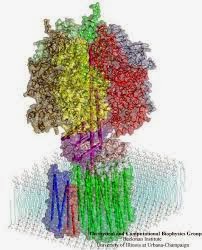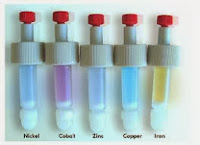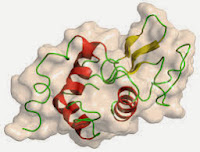What do guinea pigs, Saccharomyces cerevisiae, zebra fish and Escherischia coli have in common? They are all used experimentally to investigate Biological phenomena. We refer to them collectively as model organisms. So why Drosophila melanogaster and not Musca domestica? It usually comes down to practical reasons. Drosphila, or fruit flies have been used for scientific discovery for over 100 years. They are fast breeders, they eat cheap food and they are easy to store and maintain. From a genetics point of view, this fits the bill for mutational studies. Hence we have a rich history in using the fruit fly to explore the relationship between genotype and phenotype in general, but in particular phenomena such as eye colour and more recently development. In general, Biologists use the simplest organism they can, until a more complex one is required to investigate a phenomenon.
Horses for courses I. In my opinion, some of the greatest experiments in Molecular Biology have been carried out on bacteriophage and E.coli. The great ideas of Salvador Luria and Max Delbruck on evolution were a result of a statistical analysis of the frequency of mutations that led to bacteriophage resistance. So what does all that mean! Darwin's ideas suggested that mutations arise spontaneously in populations and it is only when those mutations give rise to some benefit to the organism, that they become fixed in a population, eventually out-competing the wild type organisms. In order to confirm this hypothesis, Luria and Delbruck turned to bacteria and bacteriophage (these are viruses that attack bacteria). Because the numbers of bacteria in a culture are in the millions, and the phage (as they are called) are even greater in number; and, doubling times are 20 minutes, it became possible to carry out a statistically controlled analysis. This demonstrated experimentally that Darwin's ideas were correct. This was only possible using this model organism.
Horses for courses II. Bacteria can provide us with insight into many molecular processes, but unlike human cells, bacteria have no nucleus (hence the name prokaryote). However, there

are many aspects of human biology that would not be appropriate to try and explain from a study of bacteria alone. So, for example, if we want to understand the way in which humans develop, we turn to fruit flies, zebra fish and mice. The genes that are responsible for laying down the body plan for a fruit fly are essentially the same as those that dictate the positioning of our limbs and the polarity of our body (head and toes). These genes (including hox genes) are often called master regulators, since they coordinate sets of other genes and in particular their spatio-temporal patterns of expression (or simply when and where they are expressed).
I have chosen to focus on the simple beetle Tenebrio molitor (or the mealworm), since it is easily obtained as a living larva, it is sold cheaply as dried food (for birds and humans), which simplifies the biochemistry; and it can be readily matured in the lab, producing a black beetle. Work in a number of genome labs have begun to explore the response of T. molitor to bacterial infection, and related genomes are available: the mealworm genome will be completed soon and we can already use its transcriptome to access information about its genetic makeup. Lets see if we can find out something new in our very own post-genomic study.
Horses for courses I. In my opinion, some of the greatest experiments in Molecular Biology have been carried out on bacteriophage and E.coli. The great ideas of Salvador Luria and Max Delbruck on evolution were a result of a statistical analysis of the frequency of mutations that led to bacteriophage resistance. So what does all that mean! Darwin's ideas suggested that mutations arise spontaneously in populations and it is only when those mutations give rise to some benefit to the organism, that they become fixed in a population, eventually out-competing the wild type organisms. In order to confirm this hypothesis, Luria and Delbruck turned to bacteria and bacteriophage (these are viruses that attack bacteria). Because the numbers of bacteria in a culture are in the millions, and the phage (as they are called) are even greater in number; and, doubling times are 20 minutes, it became possible to carry out a statistically controlled analysis. This demonstrated experimentally that Darwin's ideas were correct. This was only possible using this model organism.
Horses for courses II. Bacteria can provide us with insight into many molecular processes, but unlike human cells, bacteria have no nucleus (hence the name prokaryote). However, there

are many aspects of human biology that would not be appropriate to try and explain from a study of bacteria alone. So, for example, if we want to understand the way in which humans develop, we turn to fruit flies, zebra fish and mice. The genes that are responsible for laying down the body plan for a fruit fly are essentially the same as those that dictate the positioning of our limbs and the polarity of our body (head and toes). These genes (including hox genes) are often called master regulators, since they coordinate sets of other genes and in particular their spatio-temporal patterns of expression (or simply when and where they are expressed).
I have chosen to focus on the simple beetle Tenebrio molitor (or the mealworm), since it is easily obtained as a living larva, it is sold cheaply as dried food (for birds and humans), which simplifies the biochemistry; and it can be readily matured in the lab, producing a black beetle. Work in a number of genome labs have begun to explore the response of T. molitor to bacterial infection, and related genomes are available: the mealworm genome will be completed soon and we can already use its transcriptome to access information about its genetic makeup. Lets see if we can find out something new in our very own post-genomic study.















































